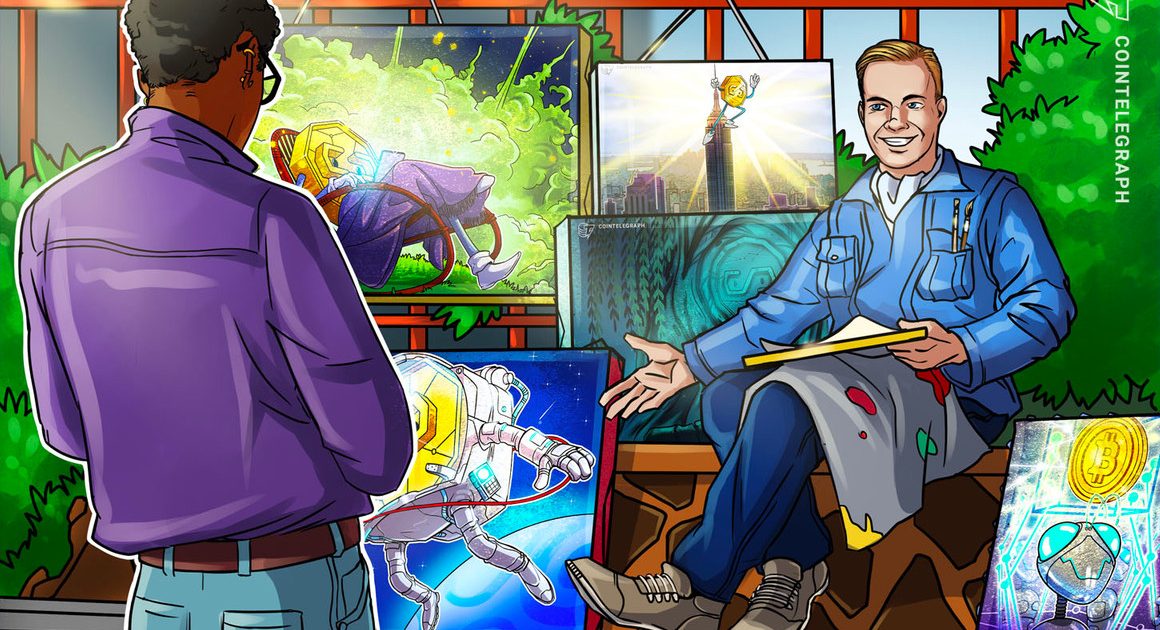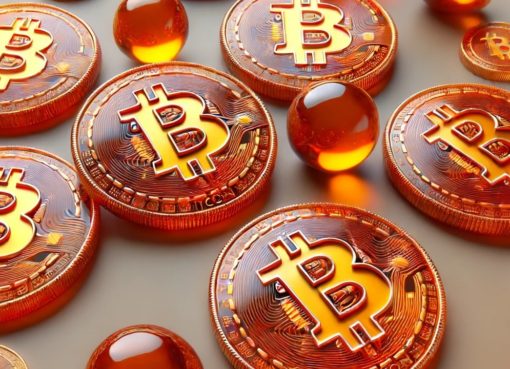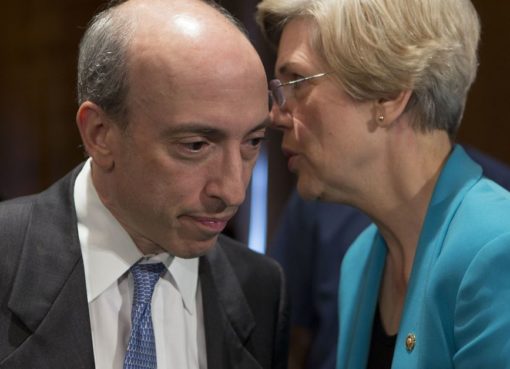The last bull run of 2017 was defined by the initial coin offering craze, which took a turn for the worse with foreseeable consequences for overvalued projects that had little more than a team and a poorly written white paper. While many useful projects were able to blossom from the ICO era, including Ethereum and others, most have come and gone with the wind, leaving thousands of unwary investors holding on to worthless bags of tokens.
A full market cycle later, and there’s now yet another rally that seems to be expanding over multiple sectors of the crypto industry, especially in decentralized finance. A lot has changed since 2017. Regulators have cracked down, investors have gotten smarter and the space has matured.
Although ICOs are still relevant today, having morphed into other forms of fundraising events — like security token offerings, initial exchange offerings and initial decentralized exchange offerings — DeFi and nonfungible tokens, or NFTs, are now the popular kids on the block.
NFTs seem to be the next hot topic in crypto, and while the numbers are still relatively small, engagement and interest seem to be rising fast. It goes to show that the sector has a lot of room for growth.
NFTs are a different class of cryptocurrency tokens. Unlike Bitcoin (BTC) or Ether (ETH), they are used to represent various types of assets that differ in value among themselves. These assets can either be digital or physical. Popular examples include artwork, land or real estate, and even people.
Trump-inspired art piece sold for $6.6 million
Inspired by the 45th United States president, an artist known as Beeple created an NFT called “Crossroads.” The piece of art, a holographic animation depicting a defeated Donald Trump lying naked in the grass, was originally sold for $66,666 back in November 2020. However, it was recently resold to an anonymous buyer for $6.6 million, breaking the previous record of $1.5 million for a single NFT sale.
Beeple is also on the verge of breaking another record: the highest sale of a single NFT through an auction house. His new piece — a work of 5,000 unique images about the somber aspects of technology, politics and wealth — is up for auction until March 11, with bids starting at $2.2 million.
Cryptox Magazine: NFT ‘art revolution’: Beeple on his 5,040-day labor of love
NFTs are blowing up
The recent developments are simply the latest in a string of fascinating headlines regarding the NFT space, and it’s not just artists that are cashing in on these types of tokens. Empowered by the independence and provable authenticity of NFTs, many celebrities, musicians and film producers are also getting involved.
Perhaps the most flagrant example of this is the recently minted Pokemon-inspired NFTs released by Logan Paul, a popular YouTuber, which raised over $3.5 million in a single day. The release featured 3,000 NFTs inspired by the Pokemon card game, and there were 44 limited-edition holographic versions featuring Logan Paul himself as a Pokemon.
On Feb. 28, another record was broken when popular musician 3LAU sold the first-ever NFT album for a whopping $3.6 million. Other noteworthy examples include the musician Grimes and Mike Shinoda from the rock band Linkin Park. Even the iconic TV show Rick and Morty now has its own crypto art stamped on the blockchain, which makes sense given the sizable crossover in the demographics of the show and the crypto space.
A genuine art movement or a cash grab?
The possible symbolism behind the bizarre dollar figures for which Beeple’s Trump piece was resold ($6.6 million), coupled with the fact the latest buyer wished to remain anonymous, leaves some unanswered questions regarding the legitimacy of the NFT art movement overall — especially when one considers how art has been traditionally leveraged by the wealthy as a means to reduce tax expenses.
Although the value of NFTs comes from their scarcity, not everyone agrees with the astronomic values, with many industry commentators calling out digital art purchases as being nothing less than nonsensical.
Is NFT art being used as a way to launder money or evade taxes, a practice not uncommon in the traditional art world, or is it truly the latest craze in the crypto and art worlds — one that is possibly here to stay?
Sébastien Borget, co-founder of NFT-based gaming platform The Sandbox, believes there is substance behind the NFT movement and that the hype we are currently witnessing has been slowly brewing for years. He told Cryptox that a new paradigm is emerging due to the limited supply of digital collectibles:
“Those witnessing a large number of records in the industry at the beginning of this year may not realize how long this has been building. A number of products have been boiling and building for the past three years and are now ready for mass adoption.”
The history of NFTs
Almost as old as Bitcoin itself, the very first experiments with NFTs were created back in 2012 and were dubbed “Colored Coins.” These were initially issued on the Bitcoin blockchain through protocols like Counterparty and Omni and were sometimes as cheap as 1 satoshi, the smallest unit of account for Bitcoin. These were meant to represent a multitude of assets and have different use cases. Colored Coins eventually fell out of use but were instrumental in paving the way for the future of NFTs.
When the market finally caught the eye of the mainstream public in 2017 with CryptoKitties, the virtual pet game became so popular that it was responsible for clogging the Ethereum network and setting a new all-time record for transaction volume on the blockchain at the time. Fast forward to 2021, and the whole infrastructure has become more robust and diverse.
A recent report by NonFungible shows that NFT transactions more than quadrupled in volume during 2020, growing from $62 million to more than $250 million. NFT art sales grew leaps and bounds, outshining any other category associated with the crypto sector. The number of active wallets also grew 97% between 2019 and 2020, an overwhelming figure to say the least.
The report also suggests that in the long term, NFTs will play an important role in the currently blossoming virtual economy, as people will invest more money and time into virtual goods and experiences. The report also states that the current capabilities are just the start to the different use cases of NFTs, which will be integrated into different industries. It may not be long before the first NFT-backed financial services surface. Examples may include digital insurance and collateralized loans.
NFTs impact different industries
The art industry seems to be in the NFT spotlight right now. It has been getting the most attention and experiencing unprecedented growth. However, it’s worth noting that other industries are following suit. Gaming is an industry perfectly fit for NFTs, and this has been made obvious by the number of existing crypto trading card games and also by the investments made by renowned gaming companies such as Ubisoft, with its Raving Rabbids game, and Atari, with retro art collectibles.
As previously mentioned, the entertainment industry also seems to be dipping its toes into the NFT waters, and not just for artists. Tickets for live events will soon be issued using NFT-based systems, which would mitigate the prevalent counterfeiting problem found in the ticketing industry.
Finally, sports leagues: NFTs are easily explained as a sort of “digital baseball cards,” so it would make sense to see major sports leagues start adopting the technology. That is already happening, with Formula 1 Delta Time, an official Formula 1 collectibles game, and NBA Top Shot, an officially licensed platform that allows for the best NBA highlights to be owned in the form of collectibles known as “Moments.”
Wilhem Pujar, co-founder and CEO of Stacktical — a decentralized platform for service-level agreements — shared a bullish vision for NFT sports collectibles, telling Cryptox: “Considering that Sports Betting is a $200B+ market, we can expect large amounts of capital to be reallocated to NFTs, which will act as both an emotional and financial hedge against empty stadiums and arenas.”
Although gaming, art and sports collectibles are the front-running industries for NFT adoption, there is underlying potential in other markets. Yat Siu, co-founder of Animoca Brands — a platform for branded blockchain gaming, including F1 Delta Time, MotoGP Ignition and other sports-related projects — believes NFTs can leave a mark in many other industries, telling Cryptox:
“Right now we see NFTs having a powerful effect on all forms of digital content such as digital art, collectibles, gaming, and most recently music, but eventually all others will follow: medical, fashion, financial, manufacturing, agricultural, insurance — you name it, and it will have relevant applications of NFTs.”
NFTs: Just another trend?
NFTs, and decentralized technologies as a whole, are changing the landscape for digital content creators and consumers alike. They allow anyone to monetize their work directly by connecting with fans and removing cumbersome middlemen. This ensures transparent ownership for their creations, which can be any type of digital media, be it photos, memes, GIFs, videos, music, books or even domain names.
Although there is still a long way to go before mainstream adoption is achieved, there are already signs of huge corporations stepping forward and becoming NFT pioneers. It’s highly likely that more recognizable brands will enter the space. Ian Friend, co-founder of DeFi project Ferrum Network, admitted that mass adoption by corporations has already started and is likely to continue, telling Cryptox: “It’s already happening. Big brands that fail to adapt this year will be playing catch up behind the first movers.”
It isn’t all about hype: NFTs may be responsible for a significant paradigm shift in digital content sharing across multiple industries, including art, gaming, real estate and more. They may even turn out to have a dominant presence in future virtual economies, especially in the esports sector where the biggest demographic crossover seems to take place among young, tech-savvy “geeks.”
Several industries will be disrupted, and the collectibles markets will be forever changed by NFTs. J. D. Salbego, CEO at AnRKey X — a blockchain-based protocol platform leveraging DeFi and NTFs for the esports gaming industry — told Cryptox: “We’re already seeing this in the form of engagement, where serious institutions have begun to recognize the value of unparalleled security, authenticity, and traceability for non-fungible assets in a digital setting.”




